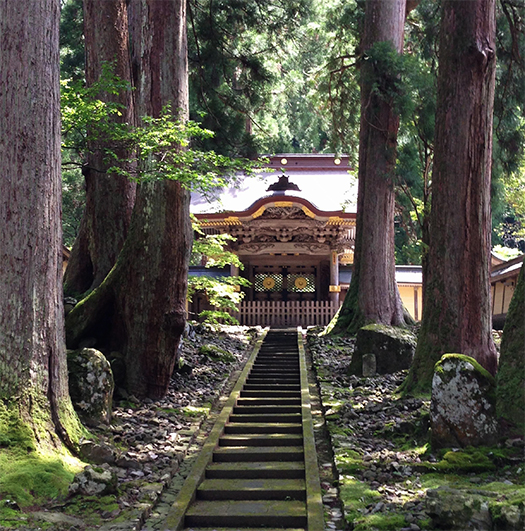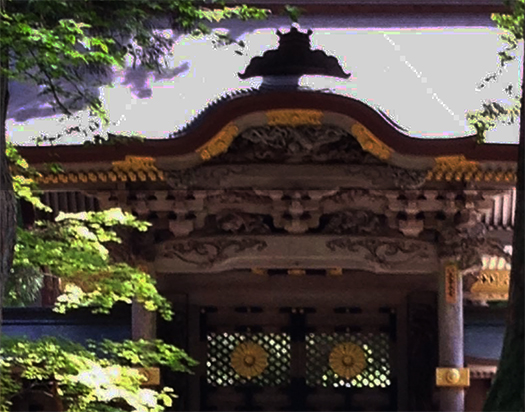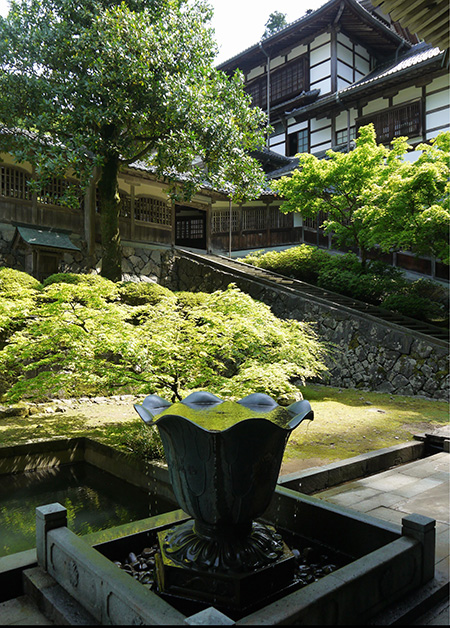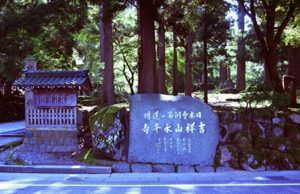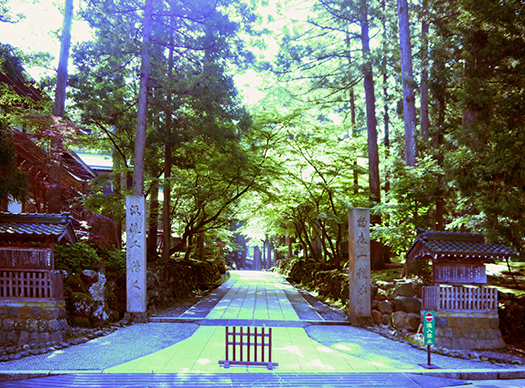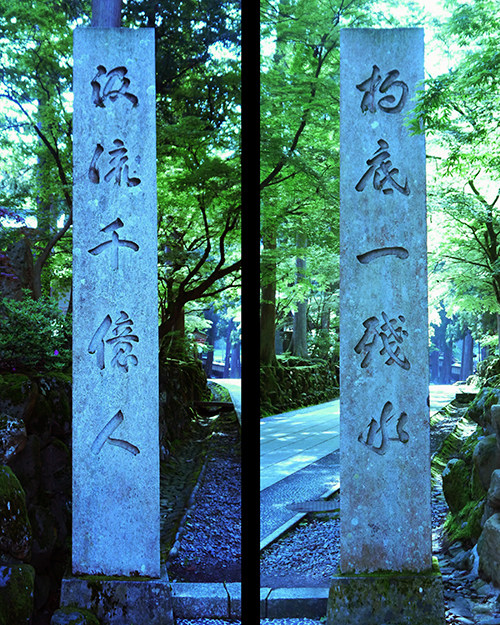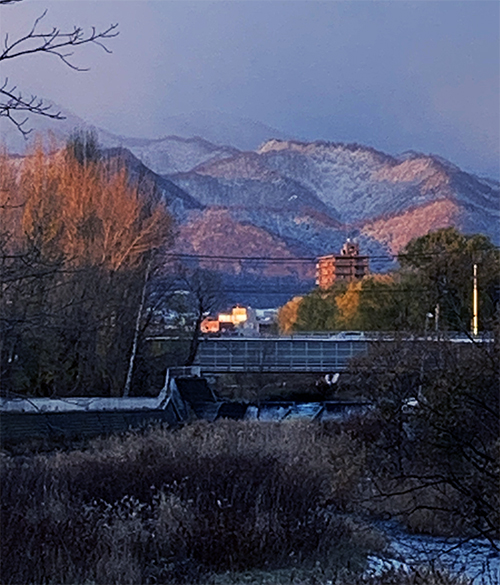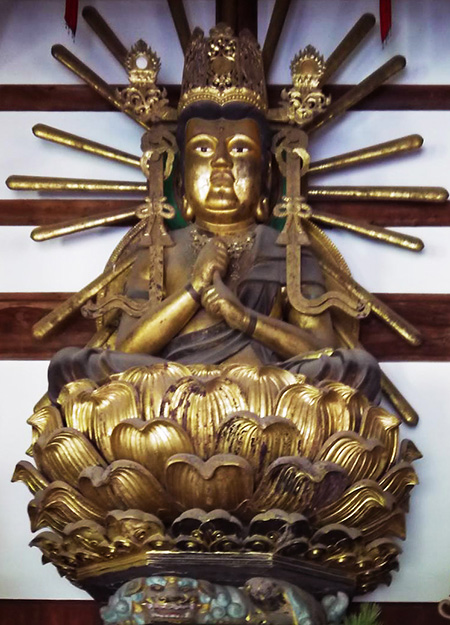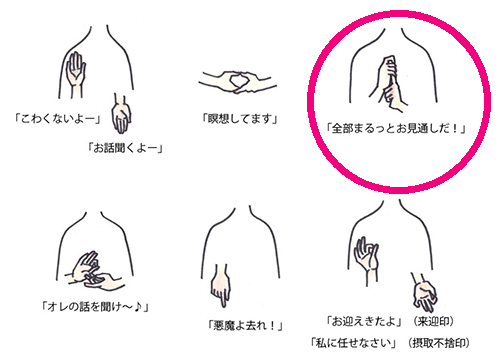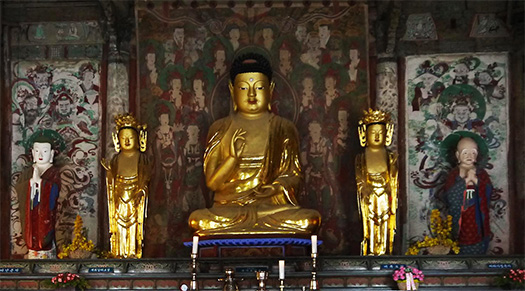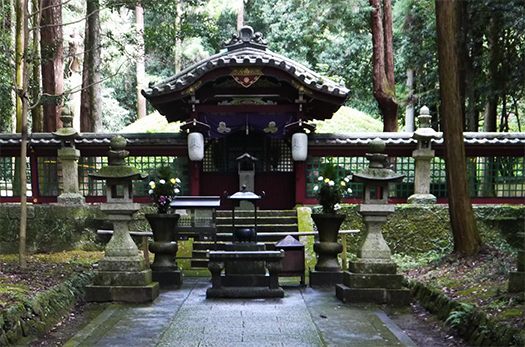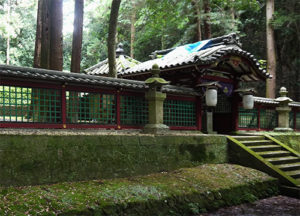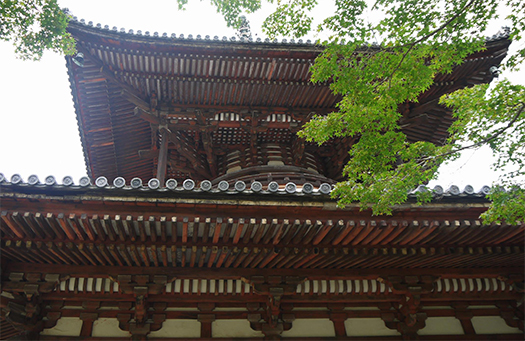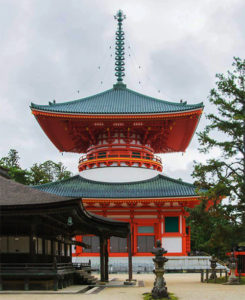
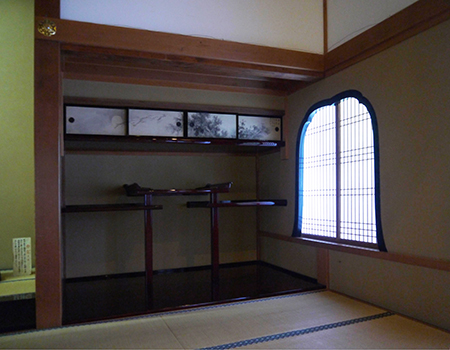

写真は江戸期に建て替えられたという永平寺「傘松閣」内観。
日本の政治権力は宗教と歴世、さまざまな関わりを持つ。
仏教導入自体が統一国家樹立に際してのアイコンとして機能していた。
それまで王権がゆるやかな連合国家体制維持のため各地域の首長に対して
大陸や半島経由のさまざまな威信材利益供与を行っていた段階から
律令と鎮護国家という中央集権国家へと進める手段としてこの宗教政策があった。
威信材が各地の古墳から出土するのは、地方王権とのこうした関係が大きいと思う。
仏教導入以降、聖徳太子蘇我氏の飛鳥寺など連綿とこうした政策が継続してきた。
奈良の東大寺建設と各地域での国分寺建設は具体的なランドマークにもなった。
結果として地方豪族の古墳建設などは国分寺建設に置き換えられた。
そういった段階を経てそれまでの畿内地域から離れた関東に
鎌倉幕府・武力権力が成立し、さらに承久の乱で勢力範囲が全国に拡大した。
この時代の宗教勢力分布で考えると中央政界での比叡山天台の権威独占が特徴。
朝廷権力の懐近くで比叡山山頂から都を見下して宗教的に支配していた。
道元ははじめ比叡山に入山して型どおりの宗教的身分上昇を企図したけれど、
当時の世界宗教・仏教の世界では禅宗がもっとも最先端の宗派だった。
宋に留学して実体感した道元は帰朝後、さっそく禅宗に特化した活動を始めるが
案の定、比叡山からの迫害が彼を襲う。臨済禅の栄西はかれに先行していたが
既成宗教権力と妥協的に京都で布教活動を行い真の禅とは言えない状況だった。
若い道元にすれば許せない腐敗堕落だと反抗心を掻き立てられたことだろう。
天台についてはとにかくこういう権力化がひどく、先般の東京国立博物館での
「天台宗特集」にはわたしも生理的な拒絶反応をずっと抱いた。
天台とは世俗権力化した宗教反動であり信長の焼き討ちには理があったのだと
日本的世論の後押しがあったようにわたしは思っています。
この時代、新興の武家権力・鎌倉政権にとっても
しがらみ地獄の既成宗教、比叡山・高野山勢力とは肌合いが合わなかったし、
常に「上から目線」的な押しつけ体質には辟易していたのではないか。
さらに古代以来の宗教勢力、南都東大寺の平家焼き討ちからの復興を支援した
開祖・頼朝のスタンスともその後の鎌倉政権は距離感があったのだろう。
頼朝は既成公家・宗教権力と人脈もありそれなりの対応も可能だったけれど
その子どもたちはむしろ公家化し旧体制に取り込まれる危険性が強かった。
たぶんこのような政治背景があって、鎌倉政権の畿内地域での最有力者として
越前・波多野家は道元に対し支援体制を取ったというのが正鵠のように思う。
鎌倉政権は一貫して既成宗教勢力ではなく宋で新興著しい禅宗を導入したかった。
道元は鎌倉幕府に招かれ半年滞在している。その後の鎌倉建長寺開山などを
考え合わせると宋での最新の禅宗教義を体得してきた道元に対し、鎌倉側では
開山者として想定していたが道元は鎌倉に開山する気は起きなかったようだ。
道元にしてみると南都・奈良や比叡山そして高野山という既成仏教勢力とは遠く
しかも伝統的に大陸や半島との海外海運の便がいい北国越前は好立地。
わざわざ鎌倉への下向・開山に食指は動かなかった。
あるいは単に条件的に見合わなかったのかも(笑)。
鎌倉建長寺はやがて宋から来日の僧・蘭渓道隆が開山者になる。
English version⬇
[Religious policy of the Kamakura Shogunate, Kenchoji and Dogen Eiheiji-4]
The photo shows the inside of Eiheiji’s “Kasamatsukaku”, which was rebuilt in the Edo period.
Although it is wide, you will be fascinated by the beautiful framed paintings on the lattice ceiling.
Japan’s political power has various relationships with religion and history.
The introduction of Buddhism itself functioned as an icon for the establishment of a unified nation.
Until then, the kingship was against the chiefs of each region in order to maintain a gradual coalition state system.
From the stage of providing various prestige material profits via continents and peninsulas
This religious policy was a means of advancing to a centralized state of decree and guardian state.
I think that the reason why prestige materials are excavated from ancient burial mounds in various places is that they have a great relationship with the local kingship.
Since the introduction of Buddhism, such policies have continued with Prince Shotoku Soga’s Asuka-dera Temple.
The construction of Todaiji Temple in Nara and the construction of Kokubunji Temple in each region have become concrete landmarks.
As a result, the construction of ancient burial mounds of local lords was replaced by the construction of Kokubunji Temple.
After going through such stages, in the Kanto region, which was far from the Kinai region until then.
The Kamakura Shogunate and armed power were established, and the sphere of influence expanded nationwide due to the Jokyu War.
Considering the distribution of religious power in this era, it is characterized by the authority monopoly of Mt. Hiei in the central political world.
He looked down on the city from the summit of Mt. Hiei near the bosom of the imperial court and ruled religiously.
Dogen first entered Mt. Hiei and attempted to raise his religious status in the usual way.
Zen Buddhism was the most advanced denomination in the world of world religions and Buddhism at that time.
Dogen, who studied abroad in Song and realized it, immediately started activities specializing in Zen Buddhism after returning to the morning.
As expected, persecution from Mt. Hiei attacks him. Eisai of Rinzai Zen preceded him
It was a situation that could not be said to be true Zen by conducting missionary activities in Kyoto in a compromise with established religious power.
It would have been aroused by rebellion that it was an unforgivable corruption for a young Dogen.
As for the heavens, this kind of power is terrible, and at the recent Tokyo National Museum.
I have always had a physiological rejection of the “Tendai sect special feature”.
Tendai was a religion reaction that became secular power, and Nobunaga’s burning was reasonable.
I think there was a boost from Japanese public opinion.
In this era, even for the emerging samurai power and the Kamakura administration
I didn’t get along with the established religion of Enryakuji Hell, Mt. Hiei and Mt. Koya.
I think he was always tired of the “looking from above” pressing constitution.
Furthermore, it supported the reconstruction from the Heike-yaki slaughter of Todaiji Temple, a religious force since ancient times.
The Kamakura administration may have had a sense of distance from the stance of the founder and Yoritomo.
Yoritomo had established public houses, religious power, and personal connections, so it was possible to take appropriate measures.
The children were rather at risk of becoming public houses and being incorporated into the old system.
Perhaps with such a political background, as the most influential person in the Kinai region of the Kamakura administration
I think it’s true that the Echizen and Hatano families have taken a support system for Dogen.
The Kamakura administration consistently wanted to introduce the emerging Zen sect in Song rather than the established religious forces.
Dogen was invited to the Kamakura Shogunate and stayed there for half a year. After that, the opening of Kenchoji Temple in Kamakura, etc.
When you think about it, Dogen, who has learned the latest Zen religion in Song, is on the Kamakura side.
He was supposed to be a mountain maker, but Dogen didn’t seem to want to open a mountain in Kamakura.
Looking at Dogen, it is far from the established Buddhist forces of Nanto, Nara, Mt. Hiei and Mt. Koya.
Moreover, northern Echizen, which is traditionally convenient for overseas shipping to continents and peninsulas, is in a good location.
I didn’t move my index finger to go down to Kamakura and open the mountain.
Or maybe it just didn’t meet the conditions (laughs).
At Kenchoji Temple in Kamakura, the monk Lanxi Daolong, who came to Japan from Song, became the founder.
Posted on 12月 1st, 2021 by 三木 奎吾
Filed under: 住宅マーケティング, 日本社会・文化研究, 歴史探訪 | No Comments »


